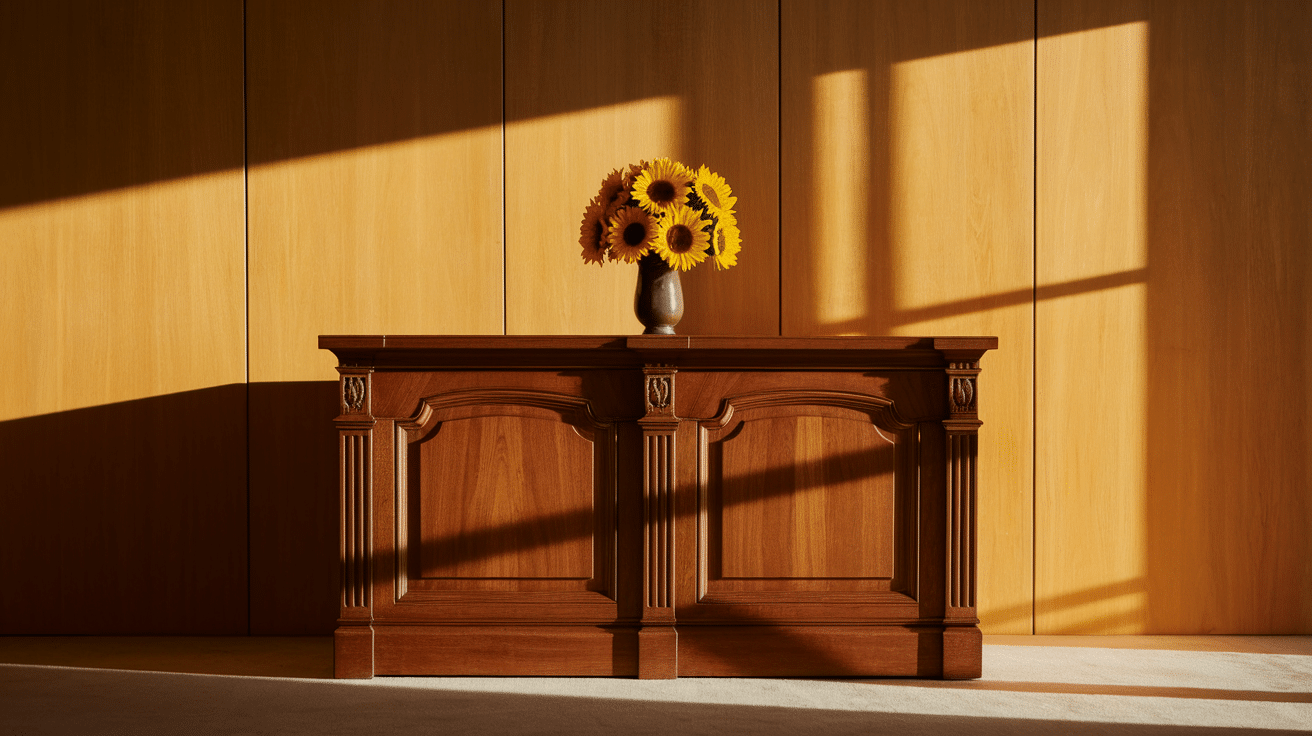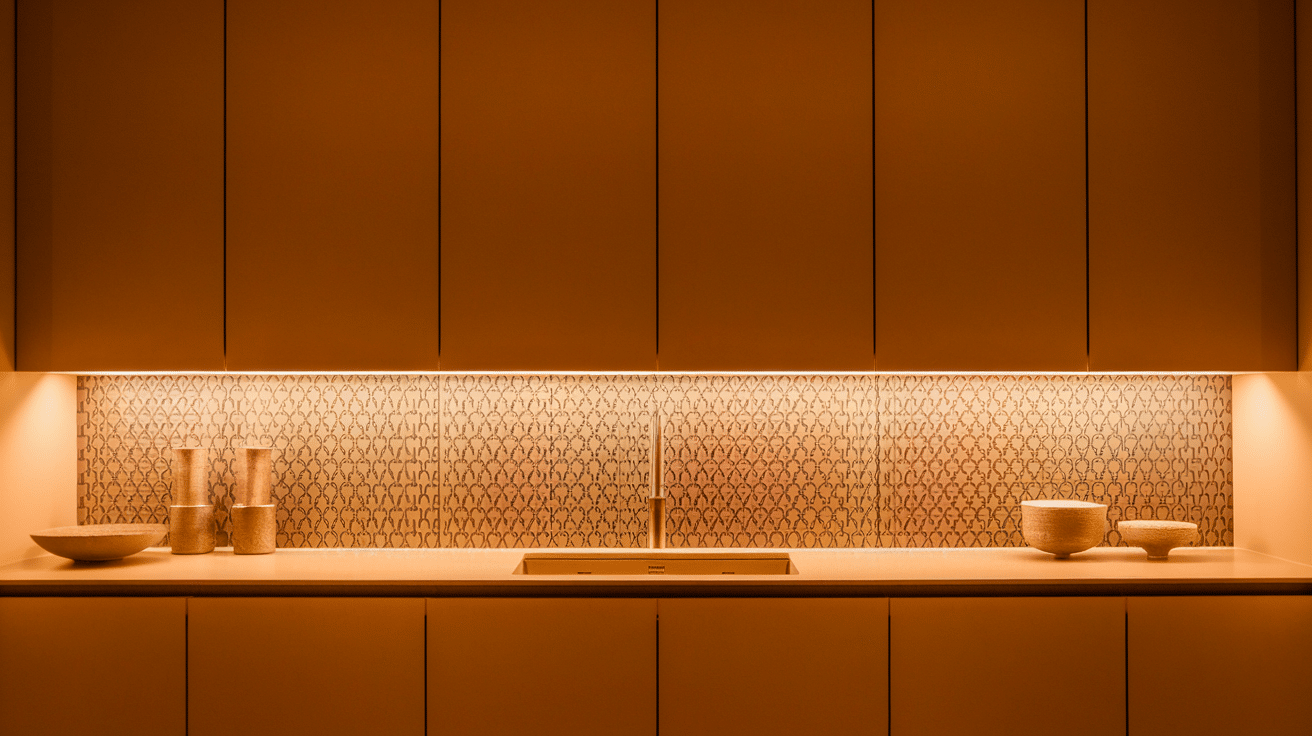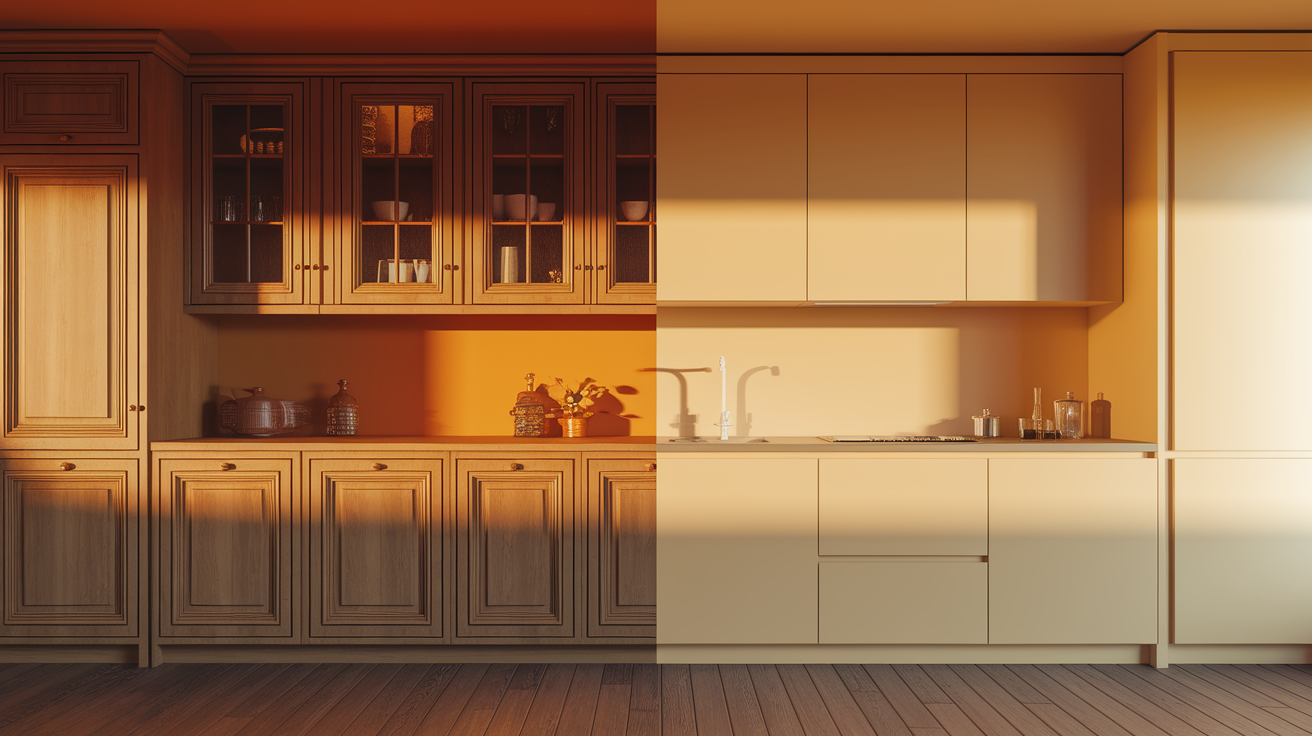Ever stood in a kitchen showroom feeling totally lost? You’re not alone.
Picking cabinets can feel like learning a new language. Face frame? Frameless? What’s the real difference?
Let’s cut through the confusion. This isn’t about trends or what your neighbor chose. It’s about finding what works for your home, your storage needs, and yes – your budget.
Both styles have their fans for good reasons. Some people swear by the classic look of face frames, while others love the clean lines of frameless cabinets.
By the time you finish reading, you’ll know exactly which style matches your needs – no fancy jargon required.
What are Face Frame Cabinets?

Face frame cabinets are a type of cabinet construction where a frame is attached to the front of the cabinet box. This frame, typically made of solid wood, adds strength and support to the cabinet structure.
The face frame provides a more traditional look, with cabinet doors typically mounted to it. This style is commonly found in kitchens and bathrooms, offering both durability and a classic appearance.
While face-frame cabinets are sturdy, they may have slightly less accessible interior space due to the presence of the frame. However, they remain a popular choice for those seeking a timeless and reliable cabinet design.
Pros:
- Provides a stronger and more durable structure.
- Traditional and timeless appearance, suitable for classic designs.
Cons:
- Less interior space is available due to the frame occupying space around the edges.
- It may create a more dated or bulky look, especially in modern settings.
What are Frameless Cabinets?

Frameless cabinets, also known as European-style cabinets, are constructed without a face frame. The cabinet doors are mounted directly to the sides of the cabinet box, offering a sleek, modern look.
This construction style maximizes interior space since there is no frame obstructing access to the cabinet’s contents. Frameless cabinets also allow for larger drawers and better accessibility.
Frameless cabinets are often preferred for contemporary and minimalist designs. They provide a clean, streamlined appearance and are typically easier to install due to their simple construction.
Pros:
- Maximizes interior space with no face frame obstructing access.
- Offers a modern, sleek, and clean aesthetic.
Cons:
- Less sturdy than face-frame cabinets, requiring more precise construction.
- It can be more expensive due to the need for high-quality hinges and hardware.
Face Frame Cabinet vs Frameless: What’s the Difference?
Choosing between face-frame and frameless cabinets depends on their differences. Both provide quality design but differ in construction, appearance, space, and installation.
Here’s a comparison to help you choose the best cabinet style for your needs:
| Feature | Face Frame Cabinets | Frameless Cabinets |
|---|---|---|
| Structure | Built with a front frame made of stiles and rails that add strength and support. | No front frame: the cabinet box is thicker, and the doors attach directly to the sides. |
| Aesthetics | A traditional or transitional look with a visible frame and increased design flexibility. | Sleek, modern, and seamless appearance with full-overlay doors and clean lines. |
| Installation | Easier to install on uneven walls; the frame helps with alignment and adjustment. | Requires precise installation due to a lack of frame support; best for flat surfaces. |
| Accessibility | The frame slightly restricts access to the cabinet interior and drawer space. | Full-access design with wider openings and better usability for drawers and shelves. |
| Storage Space | Slightly less interior space is available due to the frame surrounding the opening. | Offers more usable interior space, making it great for maximizing small kitchens. |
| Door Mounting Options | Offers inset, full-overlay, and partial-overlay doors. | Typically uses only full-overlay doors for that flush, uniform look. |
| Cost | Often less expensive, depending on materials and design. | It may be more expensive due to the use of thicker materials and modern styling. |
| Common in | Traditional, farmhouse, or classic kitchen designs. | Contemporary, modern, or minimalist kitchens. |
Which Cabinet Style is Right for You?

Choosing between face-frame and frameless cabinets depends on your style, storage needs, and budget. Here’s a quick guide to help you decide:
- Face-frame cabinets for a classic look: Face-frame cabinets feature detailed frames and inset doors, making them ideal for traditional or farmhouse kitchens. Their charm adds warmth to any space.
- Frameless cabinets for a sleek, modern design: Frameless cabinets boast clean lines and full-overlay doors, making them an ideal choice for minimalist kitchens and contemporary interiors.
- Frameless cabinets for maximum storage in small kitchens: Frameless cabinets offer wider openings and improved access, making them ideal for tight layouts that prioritize storage.
- Face-frame cabinets offer budget-friendly and easier installation. Face-frame cabinets are easy to install in older homes, providing affordable options that make them practical for budget-conscious renovations.
Conclusion: The Cabinet Choice Is Yours
So, what’s the verdict? Face frame or frameless?
The truth is, there’s no single “winner” here. Your perfect cabinet style depends on what matters most in your kitchen.
Want classic, sturdy cabinets that can take a beating? The face frame might be your match. Looking for sleek, modern storage with every inch of space put to good use? Frameless could be calling your name.
The real win comes from picking what works for your home, style, and budget. Both options offer plenty to love, with strengths that shine in different kitchens.
Ready to make your choice? Share which cabinet style you prefer in the comments below! What cabinet feature matters most to you? Let us know!


